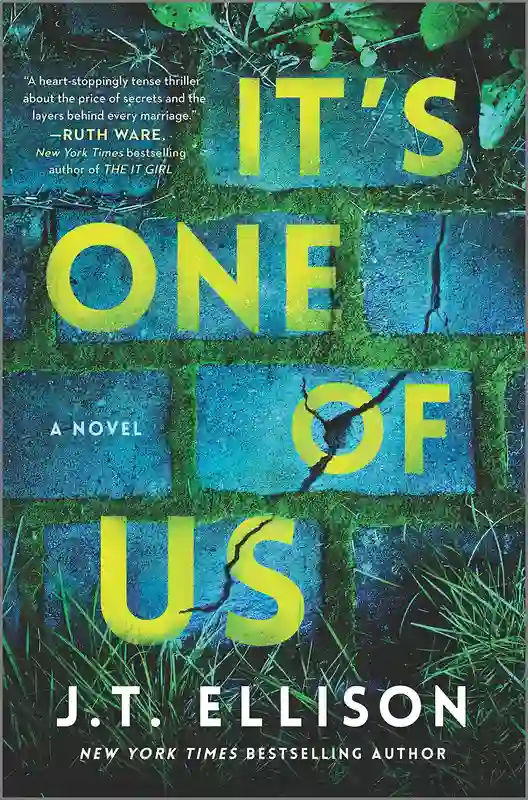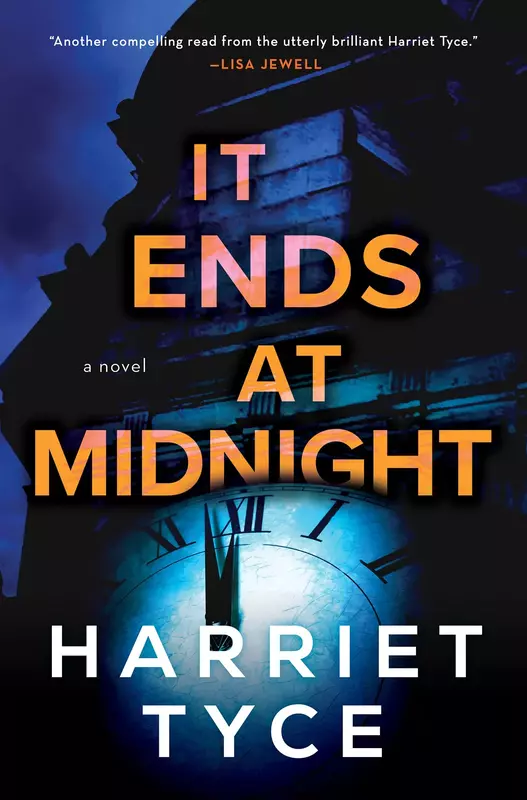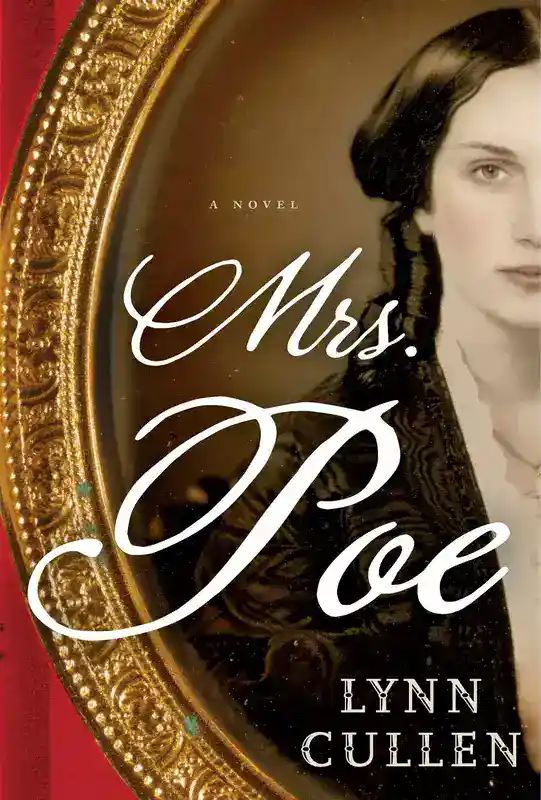This post may contain affiliate links. Read more here.
Book club questions for The Woman with the Cure by Lynn Cullen explore the themes of polio, medical research, and women’s struggles in the male-dominated field of science in the 1940s and 50s.
The story follows Dorothy Horstmann, a female doctor who wants to find a cure for polio, a disease that killed or paralyzed many victims, particularly children, and often put American cities in lockdown. Although she worked alongside male scientists in the race to find a vaccine, Dorothy’s goal was not just to beat her colleagues but to eradicate the disease entirely.
The book sheds light on the challenges and discrimination that women faced in science during that time, including being left off articles and not given the credit they deserved. Dorothy’s mission to save lives is juxtaposed with the egos and desire for fame of her male colleagues, highlighting the tension between altruism and ambition.
To read my spoiler-free review for The Woman with the Cure, click here.
If you’re planning to discuss The Woman with the Cure in your book club, get ready for a captivating and stimulating conversation! The novel raises many important questions about the ethics of medical research and the role of women in science, as well as the challenges of battling a deadly disease in a society grappling with fear and uncertainty.
As you delve into these topics, I urge you to approach your conversation with an open perspective and an eagerness to consider various viewpoints. Keep in mind that there are no absolute correct or incorrect answers, solely individual opinions and interpretations. The questions have been designed to spark a thought-provoking and enlightening dialogue that deepens your admiration for this impactful and current book.
I hope you will enjoy my book club discussion prompts for The Woman with the Cure!✨
The Synopsis
She gave up everything — and changed the world.
A riveting novel based on the true story of the woman who stopped a pandemic, from the bestselling author of Mrs. Poe.
In 1940s and ’50s America, polio is as dreaded as the atomic bomb. No one’s life is untouched by this disease that kills or paralyzes its victims, particularly children. Outbreaks of the virus across the country regularly put American cities in lockdown. Some of the world’s best minds are engaged in the race to find a vaccine. The man who succeeds will be a god.
But Dorothy Horstmann is not focused on beating her colleagues to the vaccine. She just wants the world to have a cure. Applying the same determination that lifted her from a humble background as the daughter of immigrants, to becoming a doctor –often the only woman in the room–she hunts down the monster where it lurks: in the blood.
This discovery of hers, and an error by a competitor, catapults her closest colleague to a lead in the race. When his chance to win comes on a worldwide scale, she is asked to sink or validate his vaccine—and to decide what is forgivable, and how much should be sacrificed, in pursuit of the cure.
Selected Reviews for The Woman with the Cure
“Everyone knows Sabin and Salk created the polio vaccine, but without the work of Dr. Dorothy Horstmann, there never would have been a vaccine in the first place. So huge applause to The Woman With the Cure for bringing Dorothy’s brilliant work to the forefront—and for reminding us that women have always been in science—despite those who would pretend otherwise.”
—Bonnie Garmus, New York Times bestselling author of Lessons in Chemistry
“Lynn Cullen shows off her mastery of the craft in a thrilling and heart-wrenching tale about the race to eradicate polio. We meet Salk, Sabine, and the countless other figures who worked together—and sometimes against one another—to save lives. We also meet mothers, wives, and other women whose sacrifices enabled progress. But at the center of the story is Dorothy Horstmann, the brilliant but unheralded American heroine who charted her own course with one clear goal in mind: saving lives. And it was her discovery that enabled the vaccines. This timely and important novel will touch you, inspire you, and leave you with a sense of hope about what dedicated scientists can achieve.”
—Stephanie Dray, New York Times bestselling author of The Women of Chateau Lafayette
“In this all-engrossing and poignant historical novel, Lynn Cullen expertly brings this unsung heroine’s story to the forefront with her portrayal of a fearless woman whose accomplishments largely eclipsed those of her male colleagues and helped save a generation of children. The research that must have gone into this novel is mindboggling and yet Cullen delivers it with the skill of a masterful storyteller. I was rooting for Dorothy the whole way through. Her journey will inspire and stay with readers long after the last page is turned.”
—Renee Rosen, USA Today Bestselling author of The Social Graces
In love with literature? Try audio books or writing classes
for free for 30 days.✨
Book Club Questions for The Woman with the Cure
Spoiler alert: my book club questions may contain spoilers, so make sure to discuss them after you’ve finished reading.
- The book portrays polio as a disease that struck fear in the hearts of Americans during the 1940s and 50s. How did the book’s depiction of polio as a crippling and deadly disease shape your understanding of the historical context? What other diseases or health concerns do you think capture the same level of concern and fear today?
- One of the themes in the book is the struggle of women to break into male-dominated fields such as science and medicine. How did Dorothy’s experience as a woman scientist in the 1940s and 50s inspire or frustrate you? What challenges do you think women still face in science and medicine today?
- Dr. Dorothy Horstmann is an important figure in the fight against polio, but she has been largely unrecognized by history. Why do you think this is the case? How might the field of medicine be different today if more women like Horstmann had been recognized for their contributions?
- The novel depicts a time when traditional gender roles were reinforced by media such as magazines, radio, and television. How do contemporary media outlets shape our perception of women, and can you think of any current examples in which the portrayal of women in media reinforces gender stereotypes? Consider a popular television series that you have watched and analyze its portrayal of women.
- The Woman with the Cure is a novel that explores the impact of the polio epidemic on individuals and society. In what ways did Lynn Cullen’s depiction of the polio years resonate with you, and did you have any personal or family experiences with the epidemic that shaped your reading of the book?
- Dorothy’s decision to end her relationship with Arne is a significant turning point in the novel. Do you think Dorothy was right to end the relationship, and what do you think their lives would have looked like if they had stayed together? Consider the societal pressures that influenced their decisions and how those pressures affect relationships today.
- The polio epidemic and the recent COVID-19 pandemic share many similarities, including the disruption of daily life, the importance of public health measures, and the resilience of individuals and communities. Did reading The Woman with the Cure prompt you to reflect on your experiences during the pandemic? In what ways do these two events compare, and what lessons can we learn from them?
- Dorothy’s character in the book is portrayed as someone with a deep sense of empathy and compassion for those affected by polio. How did her empathy and compassion drive her work in finding a cure for polio? How important do you think empathy and compassion are in the field of medicine and scientific research?
- The race to find a cure for polio was a global competition, with scientists from around the world working to be the first to develop a vaccine. What do you think motivated the scientists to work so tirelessly on this goal, and what impact did their work have on society as a whole?
- Sister Kenny’s statement that “we are what we have willed ourselves to be” is a powerful assertion about the role of personal agency in shaping our lives. Do you agree with this statement, and in what ways have you willed yourself to be the person you are today? Consider the influence of personal choice, social forces, and luck in shaping our identities and life paths.
- The novel explores Dorothy’s journey of self-discovery and how she comes to understand her mother in a new light. Have you had similar experiences of realizing something significant about yourself or someone close to you only after reaching adulthood? How did this realization affect you and your relationships?
- The role of family and upbringing is a recurring theme in The Woman with the Cure. How did Dorothy’s parents contribute to shaping her character, and who in your life has had a similar impact on you? Consider the ways in which subtle influences can shape our lives and personalities.
- The book depicts the scientific method as a rigorous process of trial and error, with numerous setbacks and dead ends along the way. How did the book’s portrayal of scientific research and discovery shape your understanding of the scientific process? What do you think are some of the challenges faced by scientists in today’s world?
- The lead-in chapters of the novel introduce us to several women who make sacrifices for the greater good. Which of these women did you find most relatable, and why? In what ways do these women inspire you to think about sacrifice and personal responsibility?
- Balancing career, family, love, and personal interests is a central theme of the novel and a common experience for many women. At what age did you first become aware of the choices you had to make in life, and what were some of the decisions you faced? Do you have any regrets about the choices you made, and how do you balance competing priorities today?
- The character Bente in the novel emphasizes the interconnectedness of humankind and the importance of recognizing our shared humanity. In what ways do you think we are connected as a society, and how can recognizing these connections lead to greater kindness and empathy? Reflect on ways in which you can promote these values in your own life.
- The book presents an ethical dilemma for Dorothy when she is asked to validate or sink her colleague’s vaccine. What factors do you think she considered in making her decision? How would you have approached the same dilemma if you were in her position?
- The book’s title, “The Woman with the Cure,” emphasizes the importance of individual contributions to scientific research and discovery. How do you think individual contributions to scientific research can lead to breakthroughs that benefit society as a whole? What role do you think scientists play in shaping the world we live in today?
- The book’s slow pace was mentioned by some readers. Why might the author have chosen to write the story in this way? Did you find the pacing to be a strength or a weakness of the book? How might the story have been different if it had been written with a faster pace?
- Dorothy Horstmann was the daughter of immigrants who came to the United States seeking a better life. How do you think her family’s immigrant experience shaped her approach to her work and her determination to make a difference in the field of virology? Do you think her immigrant background gave her a unique perspective on her work and the challenges she faced in her career?
Additional Recommendations
Hope you enjoyed book club questions for The Woman with the Cure by Lynn Cullen! Here are some more book recommendations along with their synopses.
It’s One of Us by J.T. Ellison
Everybody lies. Even the ones you think you know best of all . . .
Olivia Bender designs exquisite home interiors that satisfy the most demanding clients. But her own deepest desire can’t be fulfilled by marble counters or the perfect rug. She desperately wants to be a mother. Fertility treatments and IVF keep failing. And just when she feels she’s at her lowest point, the police deliver shocking news to Olivia and her husband, Park.
DNA results show that the prime suspect in a murder investigation is Park’s son. Olivia is relieved, knowing this is a mistake. Despite their desire, the Benders don’t have any children. Then comes the confession. Many years ago, Park donated sperm to a clinic. He has no idea how many times it was sold—or how many children he has sired.
As the murder investigation goes deeper, more terrible truths come to light. With every revelation, Olivia must face the unthinkable. The man she married has fathered a killer. But can she hold that against him when she keeps such dark secrets of her own?
This twisting, emotionally layered thriller explores the lies we tell to keep a marriage together–or break each other apart . . .
It Ends at Midnight by Harriet Tyce
From the acclaimed, Sunday Times bestselling author of Blood Orange, Harriet Tyce, comes a thriller of a party spiraling into murder when one guest’s plan to right old wrongs ends in blood, told with Tyce’s signature dark and propulsive twists.
It’s New Year’s Eve and the stage is set for a lavish party in one of Edinburgh’s best postcodes. It’s a moment for old friends to set the past to rights – and move on.
The night sky is alive with fireworks and the champagne is flowing. But the celebration fails to materialize.
Because someone at this party is going to die tonight.
Midnight approaches and the countdown begins – but it seems one of the guests doesn’t want a resolution.
They want revenge.
Mrs. Poe by Lynn Cullen
1845: New York City is a sprawling warren of gaslit streets and crowded avenues, bustling with new immigrants and old money, optimism and opportunity, poverty and crime. Edgar Allan Poe’s “The Raven” is all the rage—the success of which a struggling poet like Frances Osgood can only dream. As a mother trying to support two young children after her husband’s cruel betrayal, Frances jumps at the chance to meet the illustrious Mr. Poe at a small literary gathering, if only to help her fledgling career. Although not a great fan of Poe’s writing, she is nonetheless overwhelmed by his magnetic presence—and the surprising revelation that he admires her work.
What follows is a flirtation, then a seduction, then an illicit affair…and with each clandestine encounter, Frances finds herself falling slowly and inexorably under the spell of her mysterious, complicated lover. But when Edgar’s frail wife, Virginia, insists on befriending Frances as well, the relationship becomes as dark and twisted as one of Poe’s tales. And like those gothic heroines whose fates are forever sealed, Frances begins to fear that deceiving Mrs. Poe may be as impossible as cheating death itself…
And don’t miss the next captivating novel from Lynn Cullen—Twain’s End—where the acclaimed author tells a fictionalized imagining of the relationship between iconic author Mark Twain and his personal secretary, Isabel Lyon.
Thank you for reading my book club discussion questions & happy reading! ❤️


